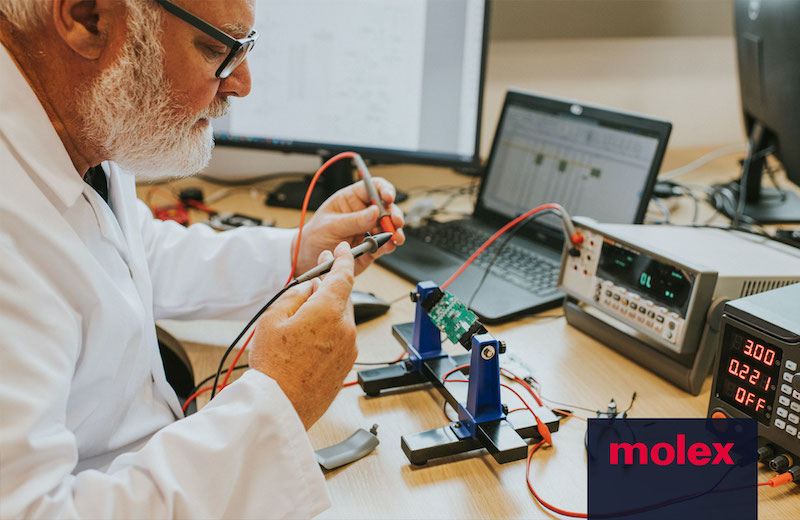Miniaturization has become a constant companion of engineers in virtually any type of product that incorporates electronics. Automobiles, mobile devices, medical equipment, defense systems, consumer electronics, appliances – every last one of these categories have one thing in common: the requirement to shrink with shifting market demands.
Competition, consumer and industrial preferences and market requirements push designers to find ways to shrink the size of electronic assemblies, components, wiring harnesses and enclosures. At the same time, the constant need to add functions and capabilities to support the latest evolving technology means making it all fit is a significant challenge. Consumers don’t want mobile devices to grow larger, for example. Automobile manufacturers need to constantly cut back on the overall size and weight of vehicles to improve mileage of legacy internal combustion cars and trucks and the range of electric vehicles (EVs). Wearable medical devices become smaller and lighter to improve patient convenience.
One aspect of design that plays a surprisingly important role is the use of electrical connectors: wire-to-board, wire-to-wire, board-to-board, flexible flat cable (FFC), flexible printed circuit (FPC) , input/output (I/O), power and radio frequency (RF) connectors are part of the electrical circular stream, bringing power and signals throughout a device and tying together all the individual parts so they can successfully interact. As overall designs shrink, either to enable device streamlining or to make room for other critical components, so must connectors. And that can be a real challenge for designers.
Applications Drive Connector Miniaturization
Mobile devices are expected to remain conveniently sized and yet as technology evolves, the demand for incremental electronic functionality grows. Take 5G, for example. New antenna arrays are being added to support the advanced capabilities of 5G. Likewise, semiconductors incorporate additional functions and have increased I/O needs. And larger batteries needed to meet power requirements or extend operating times are also presenting a significant challenge for designers.
The same challenges have emerged in automobiles, where electronics such as digital cockpits and sensing features have proliferated to such a degree that the total wiring harness is one of the heaviest and most expensive components.
Medical patients want smaller and more comfortable wearables as well. Whether in consumer electronics or medical devices, industrial controls and IoT add more capabilities to become independent edge devices that can process and store data until they can relay it back to a cloud processor.
Connectors frequently become one of the major limiting factors on mechanical size in these critical applications. The pitch size — the distance between the centers of two contacts that are next to one another in a connector — must shrink to fit smaller boards and higher pin densities that support expanding I/O requirements.
The Need for Innovation
Making things smaller to accommodate the needs of users and industries is one challenge. However, there are other design limitations and requirements.
Connectors often don’t perform a single duty in devices, but rather carry high-frequency signals like 5G or other cellular and Wi-Fi communications, as well as other forms of signaling and even power. Shielding becomes complex, needing walls between pins but also external enclosures for the connectors.
The small sizes of pins and contacts leave less material to make a given connection, which then puts stricter limits on the amounts of signals or even power they can carry. The smaller geometries can then create additional thermal issues, with smaller connections creating more resistance and then having to dissipate the resulting heat. The compressed nature of component layout and smaller physical space around assemblies also means less room to channel air to cool components and connectors alike.
Smaller connectors result in less capacity to carry signals and may increase signal loss. Selecting the right type of connector and designing it into the proper location on a printed circuit board can have a major impact on the form factor and overall signal-to-noise ratio performance.
Manufacturing Challenges
If electrical considerations require inventive thinking, so does engineering for manufacturing. Miniaturized connectors present many hurdles that a manufacturer must learn to clear.
Connectors can be very small, which can make them difficult for humans to assemble — especially when a connector can be the size of a grain of rice. These smaller connectors are also more fragile, breaking easily if not handled with proper care. This can make assembly more complex and time consuming, whether done by a machine or a person. Slightly too much exertion of force on a factory line can destroy not only the connectors but the overall assembly units, resulting in tremendous operation costs. These challenges become exponential when factory line workers are often required to handle thousands of connectors each day.
In addition to the fragile nature of miniaturized connectors, manufacturers face a number of other considerations when designing with them. These include an understanding of how to repair a broken connector, dialing in the correct mating force and factoring in the required geometry based on the layout of an assembly or device. All of these manufacturing challenges make choosing the right connection partner an essential step in the design process.
Experts in Miniaturized Connectors
Not only is manufacturing electronics with such small connectors a challenge, but so is making the components themselves. And for many designers , connectors can be an afterthought. Indeed, in a world of exciting details about the latest “cool” device, connectors can be overlooked — but their importance cannot be understated.
Case in point, Molex has developed an entire line of micro connectors to support the ever-shrinking requirement of electronics applications. With a variety of wire-to-board, blade, ribbon, wire-to-wire, milli-grid, micro TPA, board-in, board-to-board, FPC, FFC, board-to-FPC, IEEE 1386, USB and HDMI connectors, Molex has both the range of existing products and the expertise to help companies develop unique solutions to their connector needs.






























































